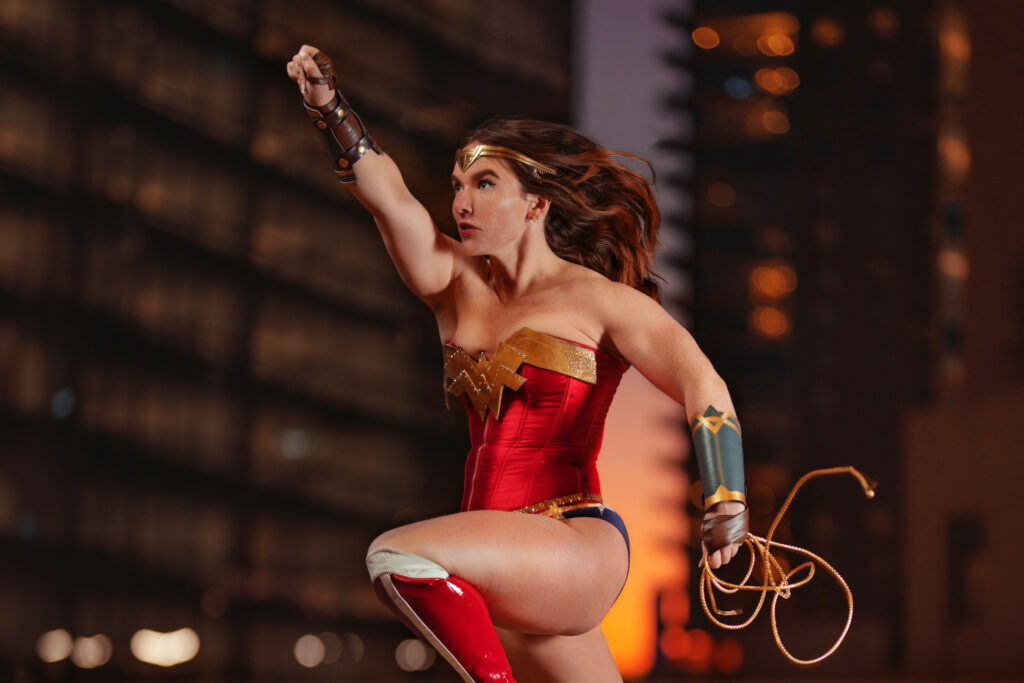Societal and media discourse are linked and strongly influence each other. Hence, societal gender discourse can be observed within different media representations. This regards non-fictional media formats like journalism, self-representations on social media but also fictional productions like series or films. In this post, I want to focus on the latter by evaluating gender representations within Western society’s most commercially successful film genre in the current time and age: Superhero films.
Since their inception in the 1960s, U.S. American superhero films have traditionally relied on classic gender role divisions by depicting a physically strong male hero intending to save the world. Women were usually kept at the margins, served mainly as sexually appealing and supporting characters. If they had more significant roles and battles, they were often smaller than the ones of their male counterparts and motivated by less noble motives like personal revenge.
However, especially films published in the second decade of the 21st century showed women in more active roles such as team leaders, challengers of authorities, handlers of weapons and central characters. In 2017 the first female superhero to save the world as a lead character was depicted in the film Wonder Woman. Two years later, on International Women’s Day (8th of March) 2019, the superhero film Captain Marvel was released and campaigned as “a film meant to empower women” (Garcia, 2019). Here again, a female lead character represents a superheroine to save the world. Both films further differentiated themselves from other Hollywood productions through the involvement of women in high and decisive positions on the production side.
The trend continues and we see more and more women taking on active and lead roles in superhero films. While this is certainly a positive development, attention can be drawn to the lack of intersectionality that we still observe in most superheroine depictions. Intersectionality draws attention to the fact that not gender alone determines people’s lived experiences but also other social constructs like class and race. For example, films like Wonder Woman and Captain Marvel, mostly focus on white superheroines whose experiences of discrimination are limited to sexism while other group-related discriminations are only sporadically referred to in the form of side characters. As a result, they focus on the realities of white cis-women, a perspective that many feminist movements have often been criticized for. Also, partnerships that diverge from the heterosexual norm face a huge gap in representation.
In order to see a holistic representation of lived realities that do not correspond to the hegemonic norm in superhero films, we still have a long way to go. However, looking at the short overview above and what has already been achieved, we can be optimistic for change and more representations of gender diversity.
References
- Bowman, E. (2018, September 9). Female breakout ‘Captain Marvel’ screenwriter is disrupting the superheroine trope. Retrieved March 2020, from npr.org: https://www.npr.org/2018/09/09/645703206/female-breakout-captain-marvel-screenwriter-is-disrupting-the-superheroine-trope
- Bukatman, S. (2011). Why I hate superhero movies. Cinema Journal, 50(3), pp. 118-122.
- Dyer, R. (2017). White . London and New York: Routledge.
- Garcia, S. (2019, April 9). ‘Captain Marvel’: Feminism lacking in intersectionality. Retrieved October 2019, from femmagazine.com: https://femmagazine.com/captain-marvel-
- hooks, b. (2015). Talking back. Thinking feminist, thinking black. New York and London: Routledge.
- King, N., Streeter, R., Herling, J., & Rose, T. (2019). Gender in film and video . New York and London : Routledge.
- Roblou, Y. (2012). Complex masculinities: The superhero in modern American movies. Culture, Society & Masculinities, 4(1), pp. 76-91.Tasker, Y. (2015). The hollywood action and adventure film . West Sussex: John Wiley & Sons.

What’s on TV? The role of gender and social status in media representation (Germany)
